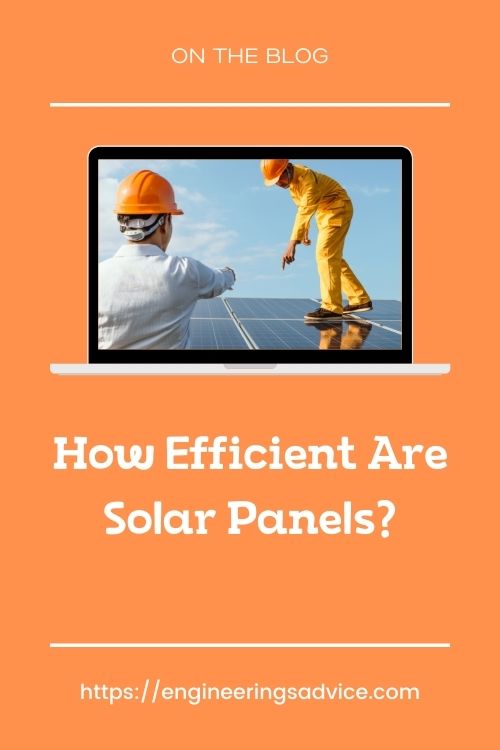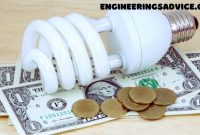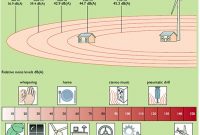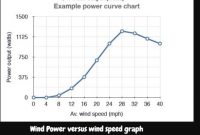How Efficient Are Solar Panels– Solar panel efficiency is a measure of the amount of sunlight (irradiation) which falls on the surface of a solar panel and is converted into electricity.
Solar panels can typically convert 15% to 22% of solar energy into usable energy, depending on factors such as placement, orientation, weather conditions, and so on. The amount of sunlight that solar panel systems can convert into actual electricity is referred to as performance, and the outcome determines solar panel efficiency.

Such generation requires the installation of large batteries for a full power supply. Moreover, in order to achieve the required output voltage, the panels are connected in series or in parallel. At the same time, their area can reach from several square meters.
How Efficient Are Solar Panels
The efficiency of solar panels depends on a number of reasons:
- Type of panel material such as monocrystalline, polycrystalline and thin-film
- Inclination, orientation and wiring of the panels
- Temperatures and sunshine hours throughout the year
- Inverter efficiency that converts solar power to direct current
Let’s take a closer look at each factor.
Photocell material
![]()
Solar converters are divided into three types, depending on the method of forming the silicon atom:
- polycrystalline;
- monocrystalline;
- amorphous silicon panels.
Polycrystalline Panels
The first type of solar panel is made of molten silicon crystal rod material. Then printed on a rectangular mold. When compared to Monocrystalline Silicon, this solar panel is inferior. In addition, the results are not identical with the others.
Polycrystalline panels are made of pure silicon and have a relatively high efficiency 14-17%.
Monocrystalline panels
This type of solar panel is a type that uses silicon as a constituent of solar cells. This solar panel has been sliced thin using new technology so that solar cells can produce electrical energy. This type of Monocrystalline panel uses a single type which has a higher efficiency. This panel has a dark black color and is cut off at each corner
Monocrystalline panels are less efficient at converting solar energy. Their efficiency is about 10-12%. But the low energy consumption for the manufacture of such converters makes them more affordable.
Amorphous silicon panels (Thin Film)
Amorphous silicon (or thin-film) panels are simple and inexpensive to manufacture and therefore affordable. However, their efficiency is much lower than that of the previous two types – 5-6%. In addition, elements of thin-film silicon converters lose their properties over time.

Thin film batteries are also made with copper, indium, gallium and selenium particles. This slightly increases their productivity.

How Efficient Are Solar Panels: Weather
This indicator depends on the geographical location of the panel: the closer to the equator, the higher the density of solar radiation.
In winter, the performance of photocells can decrease from 2 to 8 times. This is primarily due to the accumulation of snow on them, a reduction in the duration and number of sunny days.
It is important to remember: in the winter time, watch out for the inclination of the panels, since the sun is lower than usual.
How Efficient Are Solar Panels: External Factor
In order for the battery to work efficiently, you need to take into account several nuances:
- the angle of inclination of the battery to the sun;
- temperature;
- lack of shadow.
The angle between the working surface of the transducer and the sun’s rays should be close to straight. In this case, the efficiency of photocells, all other things being equal, will be maximum. To increase the efficiency, in addition to them, a sun tracking system is installed, which changes the tilt relative to the position of the luminary. But this is not common due to the high cost of equipment.
In the process of operation, many batteries heat up, which adversely affects the quality of the conversion of solar energy into electrical energy. To avoid losses, it is necessary to leave space between the device and the supporting surface. This will allow air flow to pass freely and cool the converters.
It is important to know: it is necessary to wipe the panels 2-3 times a year, cleaning them from dust and thereby increasing the permeability of the sun’s rays.
The efficiency of photovoltaic cells directly depends on the amount of sunlight falling on them. And it is very important to provide for the correct installation of the transducers with a complete absence of shadows falling on the working surface. Otherwise, the efficiency of the entire system as a whole may suffer. As a rule, batteries are installed on the south side.


